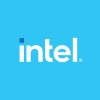Benoît VANDENBULCKE cofondateur chez Smart Green Execution

New Platforms Business Developement Manager
Sep 2003 - Sep 2008 · 5 yrs 1 mo
SONY Account Manager
Sep 1999 - Sep 2003 · 4 yrs 1 mo
Field application Engineer
Sep 1994 - Sep 1999 · 5 yrs 1 mo
“Intel is more than a company — it is a mission.”
I spent nearly 15 unforgettable years at Intel. It shaped how I think, how I build, and what I believe technology can achieve.
But 17 years later, I look at Intel and I ask: Where did the magic go?
- The market has shifted. Intel has lost ground. And the world is not waiting.
- The question now is not how to recover share.
- It’s deeper: Is Intel’s business model still relevant?
- I believe it can be — but only through bold, structural transformation.
- It’s time for its board of directors to decide for a split of Intel into three independent, purpose-driven entities, each laser-focused, each world-class:
=========================
= 1. Intel Corp (Holding) – The Brain =
=========================
-Set long-term vision and strategy
-Invest in moonshot R&D: quantum, neuromorphic, AI accelerators
-Curate and market flagship processors (Core, Xeon, Gaudi)
-Source production dynamically: IFS, TSMC, or others
===============================
= 2. Intel Foundry Services (IFS) – The Muscle =
===============================
-Operate as a neutral, global foundry, open to all customers
-Target Apple, Qualcomm, NVIDIA with competitive nodes
-Compete directly with TSMC and Samsung
-Attract government funding as a critical infrastructure asset
==============================
= 3. Intel x86 Licensing Group – The Engine =
==============================
-License x86 architecture like ARM licenses its IP
-Enable third parties to build x86 chips tailored to their needs
-Unlock massive royalty-driven revenue
-Expand the x86 ecosystem instead of guarding it
================================
= This isn’t fragmentation. It’s strategic clarity. =
================================
- TSMC doesn’t sell chips. ARM doesn’t own fabs.
- Intel, trying to do everything under one roof, has become too slow for the AI decade.
- Let each unit compete — openly, freely — and Intel can lead again.
Because at its best, Intel doesn’t follow trends. It sets them.
Activate to view larger image,


New Platforms Business Developement Manager
Sep 2003 - Sep 2008 · 5 yrs 1 mo
SONY Account Manager
Sep 1999 - Sep 2003 · 4 yrs 1 mo
Field application Engineer
Sep 1994 - Sep 1999 · 5 yrs 1 mo
“Intel is more than a company — it is a mission.”
I spent nearly 15 unforgettable years at Intel. It shaped how I think, how I build, and what I believe technology can achieve.
But 17 years later, I look at Intel and I ask: Where did the magic go?
- The market has shifted. Intel has lost ground. And the world is not waiting.
- The question now is not how to recover share.
- It’s deeper: Is Intel’s business model still relevant?
- I believe it can be — but only through bold, structural transformation.
- It’s time for its board of directors to decide for a split of Intel into three independent, purpose-driven entities, each laser-focused, each world-class:
=========================
= 1. Intel Corp (Holding) – The Brain =
=========================
-Set long-term vision and strategy
-Invest in moonshot R&D: quantum, neuromorphic, AI accelerators
-Curate and market flagship processors (Core, Xeon, Gaudi)
-Source production dynamically: IFS, TSMC, or others
===============================
= 2. Intel Foundry Services (IFS) – The Muscle =
===============================
-Operate as a neutral, global foundry, open to all customers
-Target Apple, Qualcomm, NVIDIA with competitive nodes
-Compete directly with TSMC and Samsung
-Attract government funding as a critical infrastructure asset
==============================
= 3. Intel x86 Licensing Group – The Engine =
==============================
-License x86 architecture like ARM licenses its IP
-Enable third parties to build x86 chips tailored to their needs
-Unlock massive royalty-driven revenue
-Expand the x86 ecosystem instead of guarding it
================================
= This isn’t fragmentation. It’s strategic clarity. =
================================
- TSMC doesn’t sell chips. ARM doesn’t own fabs.
- Intel, trying to do everything under one roof, has become too slow for the AI decade.
- Let each unit compete — openly, freely — and Intel can lead again.
Because at its best, Intel doesn’t follow trends. It sets them.
Activate to view larger image,


